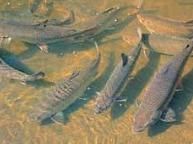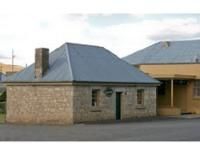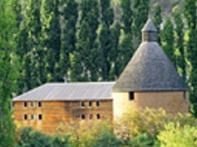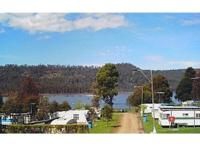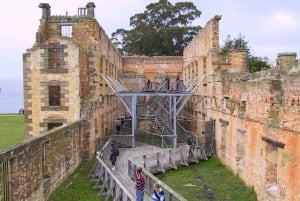Upper Derwent Valley
Upper Derwent Valley
People living in the Derwent valley think they have the perfect lifestyle. Wherever they are they have either beautiful river or valley views or mountain vistas to soak up. The peaceful, relaxing surroundings are not far from rugged wilderness but if you want a dose of the city life you are close enough to head to Hobart to do some shopping, visit friends or catch a show. If you want to catch a trout there are plenty of those around. The valley is the gateway to Mount Field National Park, world heritage listed wilderness and trout fishing.
New Norfolk
New Norfolk is the largest town in the Upper Derwent valley with a population of about 9000. It is the third oldest settlement in Tasmania after Hobart and Launceston, with settlers lured by the rich valley soil, rolling hills and streams aplenty. Quite a few settlers were persuaded in the early days to leave Norfolk Island and settle in Tasmania with this being the origin of its name. For nice views over New Norfolk and the Derwent river head up to Pulpit Rock Lookout. An early crop in the area was hops, used in the brewing of beer. A hop field is an unusual site with hop vines climbing vertical leader strings for metres into the air. Not so many are around now but numerous old oast houses (kilns) are found along the roadside. There is an oast house on the edge of Tynwald Park through which you can take a self-guided tour to learn about how hops were processed. Many popular trees were planted as windbreaks for the hops and these remain, placing New Norfolk on the map as a place to see in autumn for its beautiful colours. New Norfolk has Tasmania's oldest Anglican church in St Matthews. In the past the town was well known for the large mental institution that was there. This is now gone but locals are hopeful that the Willow Court Historic Site will be renovated, which dates from the 1820's. Though a quiet place you can have a white-knuckle adventure here by hopping on the jet boat-rides that are run on the river by Devil Jet.
Plenty
Just ten minutes upriver from New Norfolk is a place named Plenty (population about 160), located on the river of the same name just before it flows into south side of the Derwent River. It is well known notable for the Salmon Ponds and the Museum of Trout Fishing. The Salmon Ponds trout hatchery is Australia's oldest. Of the trout and salmon transported by ship in the 1860's, it was the trout that survived the best. There are six ponds displaying rainbow, brown, brook and tiger trout as well as salmon.
Other towns in the upper Derwent valley are Hamilton, Ouse, Wayatinah and Ellendale.
Ellendale
Ellendale is situated off the Lyell Highway, not far from the Mount Field National Park. With a past strongly tied to the timber industry and hop growing, a mix of farming takes place these days.
Hamilton
Hamilton (pop. about 150) shows signs of its larger past with historic sandstone buildings in the main street. You can delve into its history with a look through the Hamilton Heritage Centre, which also has walking tour pamphlets. The most important historic sites are St Peter's Church (consecrated in 1838), Glen Clyde House (1840), now a craft gallery, and the accommodation at the Old Schoolhouse (1856), Emma's Cottage (1830), George's Cottage (1845), Victoria's Cottage (1845) and the Hamilton Inn (1834). Nearby Lake Meadowbank is a good spot for fishing or water sports. Curringa Farm just 3km east of town does tours of their working merino sheep farm. Ouse (pop. about 160) is 15km further up the valley, or Lyell Highway which closely follows the river valley.
Ouse
Ouse (pronounced ooze) is on the Ouse river not far from where it joins the Derwent River. Though close to Hamilton the Anglican church built a church here as well, feeling the rough road trip to Hamilton was too much to expect of parishioners. By 1842-43 the Ouse Bridge Chapel of St John the Baptist had been erected and is notable for its impressive stained glass windows and memorials to the early settlers in the district. Also in the area is 'Millbrook Water Mill' in Victoria Valley Road which dates from 1843.
Wayatinah grew up servicing the hydro-electric workers in the area but now is a quiet place to stop and enjoy, be it with a visit to the Wayatinah Tavern and Store or a stay at the Wayatinah Lakeside Caravan Park.


